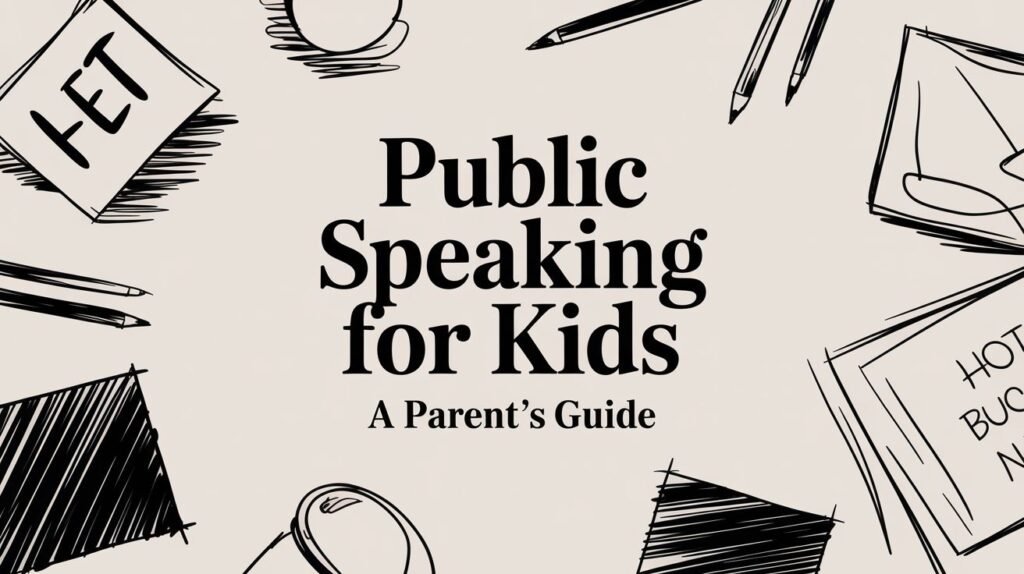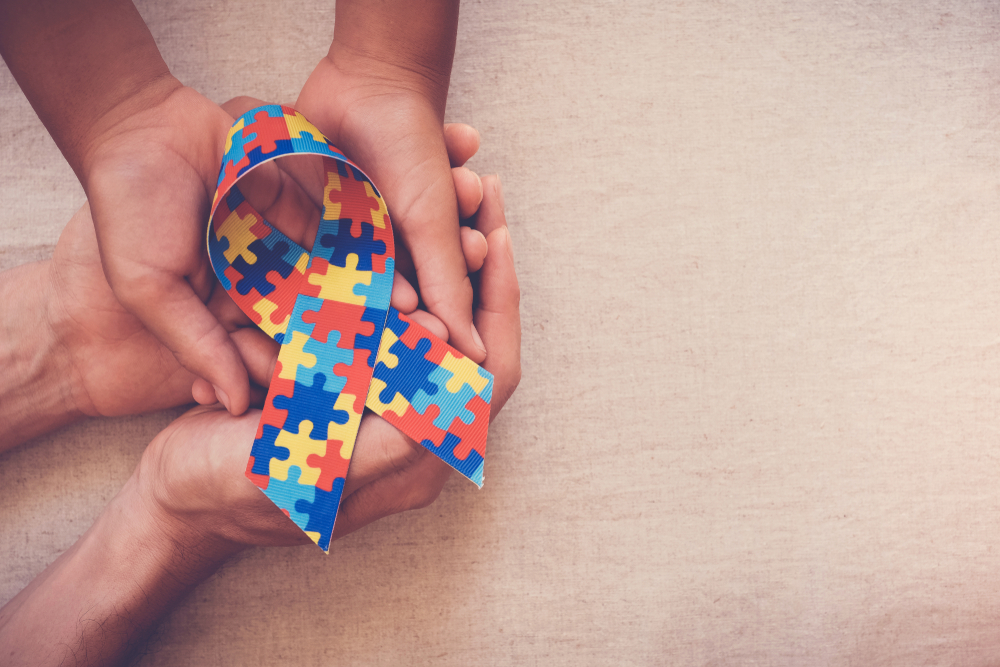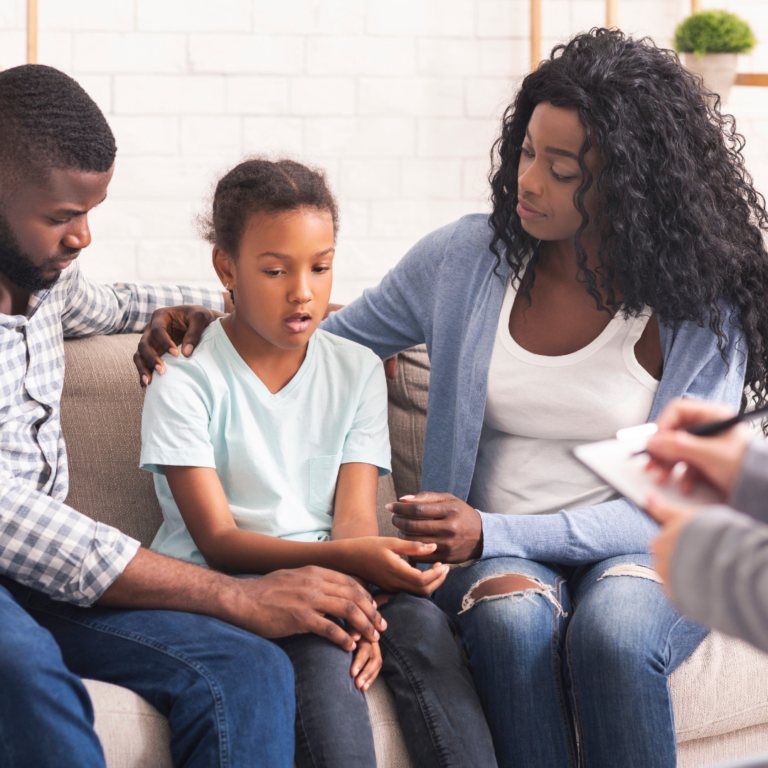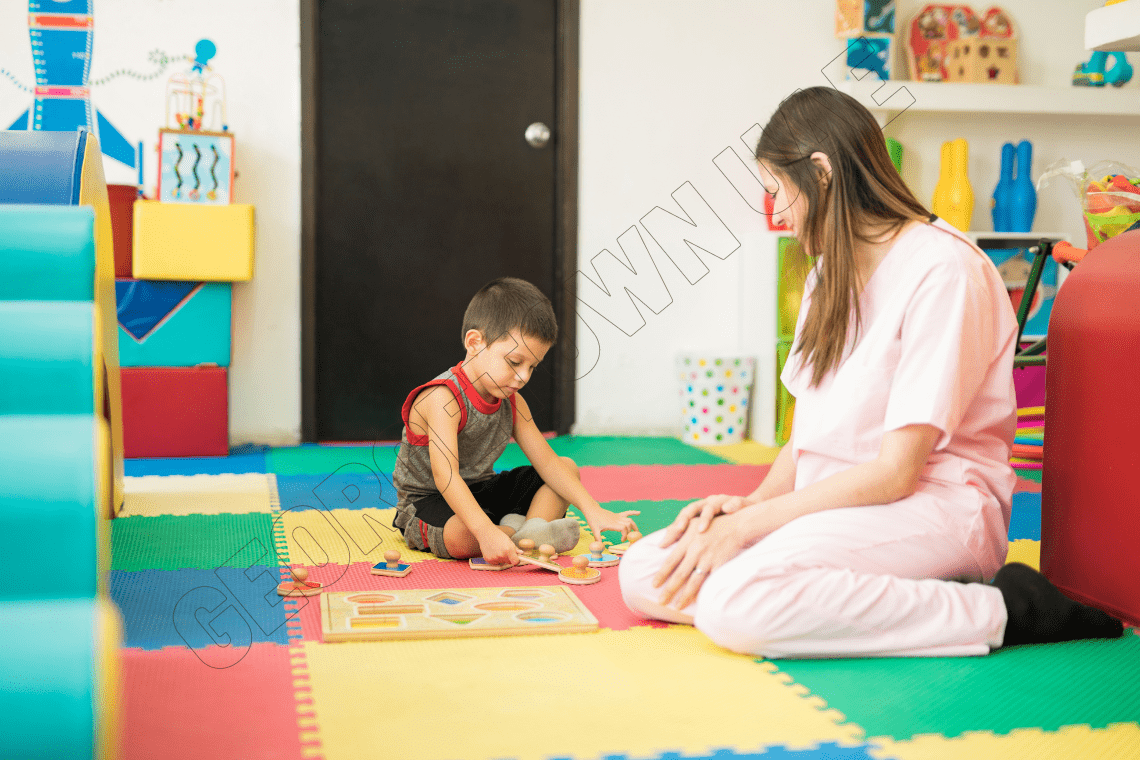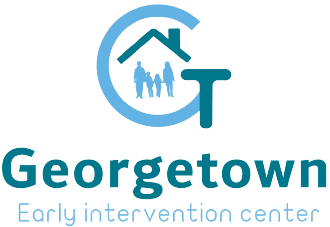When we talk about public speaking for kids, what we're really talking about is building lifelong confidence. It’s so much more than just getting through a school presentation. This is about giving children the tools to share their ideas, connect with people, and build the kind of resilience that will set them up for whatever comes their way.
The journey starts by shifting the narrative. Let's frame public speaking not as a scary requirement, but as an exciting way for them to express who they are.
Why Public Speaking Is a Skill for Life

Many parents see public speaking as a formal skill—something needed for a book report or, much later, a career. But its real magic lies in the everyday confidence it builds from the ground up. When a child learns how to share their thoughts clearly and without fear, it completely transforms how they see themselves and interact with the world.
This isn't about raising a world-class orator overnight. Far from it. It's about nurturing a child who isn’t afraid to ask a question in class, share an opinion with friends, or simply tell a great story at the dinner table. These small acts of courage are the true building blocks of self-assurance.
Building Confidence and Critical Thinking
Think about it: every time a child organizes their thoughts to explain something—whether it's the plot of a new movie or why their favorite toy is the best—they're practicing critical thinking. They have to structure a narrative, choose their words, and think about who they're talking to. This is the very foundation of effective communication.
In a wonderfully diverse and multicultural environment like the UAE, these skills are even more vital. Children who can articulate their thoughts can bridge cultural gaps, share their unique perspectives, and form much deeper connections with their peers. That ability to communicate with conviction is a real advantage.
The goal isn’t to erase nervousness. It’s about giving children the tools to manage it. By learning to turn that flutter of fear into focused energy, they develop resilience—a skill that will serve them far beyond any stage.
Preparing for Future Success
It’s no surprise that public speaking skills are directly linked to success in school and beyond. A confident speaker is more likely to participate in class discussions, ask insightful questions, and even be seen as a leader by their teachers and friends. This engagement doesn't just look good on paper; it deepens their learning and personal growth.
The importance of these skills is gaining more and more recognition in education. Research has found that 60% to 70% of children experience some level of public speaking anxiety, which can genuinely hold them back. The good news? Structured programs and consistent practice can slash that fear by about 20%, showing just how powerful early coaching can be.
Educational authorities in the UAE are increasingly promoting workshops to build these skills, understanding their clear link to both academic performance and career readiness. If you're curious, you can discover more insights about advancing language teaching in the MENA region.
The table below breaks down some of the core advantages your child gains when they start this journey early.
Core Benefits of Early Public Speaking Training
| Skill Developed | Long-Term Benefit for Your Child |
|---|---|
| Articulation & Clarity | Expresses ideas effectively in school, social settings, and future interviews. |
| Critical Thinking | Learns to organize thoughts logically and build persuasive arguments. |
| Emotional Resilience | Develops coping mechanisms for anxiety and builds confidence from overcoming challenges. |
| Leadership Qualities | Becomes more comfortable sharing opinions and guiding group discussions. |
| Active Listening | Learns to pay attention to an audience and adapt their message accordingly. |
| Empathy & Connection | Understands how to connect with others' perspectives and build stronger relationships. |
Ultimately, by encouraging public speaking, we're doing more than just teaching kids how to talk. We’re empowering them to think, to lead, and to connect with the world around them with true conviction.
Creating a Safe Space to Find Their Voice

Long before a child ever stands in front of a classroom, their public speaking journey starts at home. The single most important first step isn't about formal lessons or practicing speeches. It's about creating an environment where sharing their thoughts feels as natural and safe as playing with their favorite toys.
We're not aiming for performance here; we're building a foundation of comfort.
The goal is to seamlessly weave moments of self-expression into your everyday routines. When speaking up is just a normal part of family life, it stops being a scary, high-stakes event and becomes a familiar habit. Think low-pressure, high-encouragement.
Turn Everyday Moments Into Practice
You don't need a special curriculum to get started. Honestly, some of the simplest, most fun activities make the biggest difference in building the confidence needed for public speaking for kids. The secret is turning ordinary conversations into chances for them to organize and share their thoughts without ever feeling like they're being graded.
Here are a few easy ideas to try:
- Family 'Show and Tell': Once a week, let everyone in the family share something they love—a cool rock, a drawing, or a book they just read. Ask simple questions like, "What makes this so special to you?" or "Tell me your favorite part about it."
- Dinner Table Storyteller: Make your child the official "storyteller of the day." Ask them to tell you one interesting thing that happened. This simple act turns a basic chat into an opportunity to build a mini-narrative with a beginning, middle, and end.
- Animated Story Time: When you're reading a book together, take turns doing the voices for different characters. It’s a playful way to encourage vocal variety and expression in a fun, no-stakes setting.
These small, consistent moments send a powerful message: your voice matters here, and we love to hear it. This supportive atmosphere is absolutely vital. Understanding the role of parents in language therapy success in the UAE can offer even deeper insights into creating this kind of nurturing environment at home.
Focus On Effort, Not Perfection
One of the biggest roadblocks for young speakers is the paralyzing fear of making a mistake. As a parent, your reaction is their roadmap. When they stumble over a word or lose their train of thought, your calm encouragement is what teaches them resilience.
The most powerful feedback you can give is praise for their courage to speak, not the polish of their delivery. A simple "I loved how you explained that!" is far more effective than correcting their grammar mid-sentence.
This approach creates a judgment-free zone where they feel safe enough to experiment, make errors, and try again. Your home becomes their personal rehearsal space for the world—a place where their voice is not only heard but truly celebrated.
For some kids, just reading aloud can be a major hurdle. In these cases, assistive tools can make a huge difference, and learning how text-to-speech technology can assist students with reading difficulties is a great way to build an even more supportive learning environment.
By focusing on these foundational steps, you're doing more than just teaching public speaking. You're nurturing a confident communicator who knows, without a doubt, that their ideas are worth sharing.
Navigating Nerves and Building Real Confidence
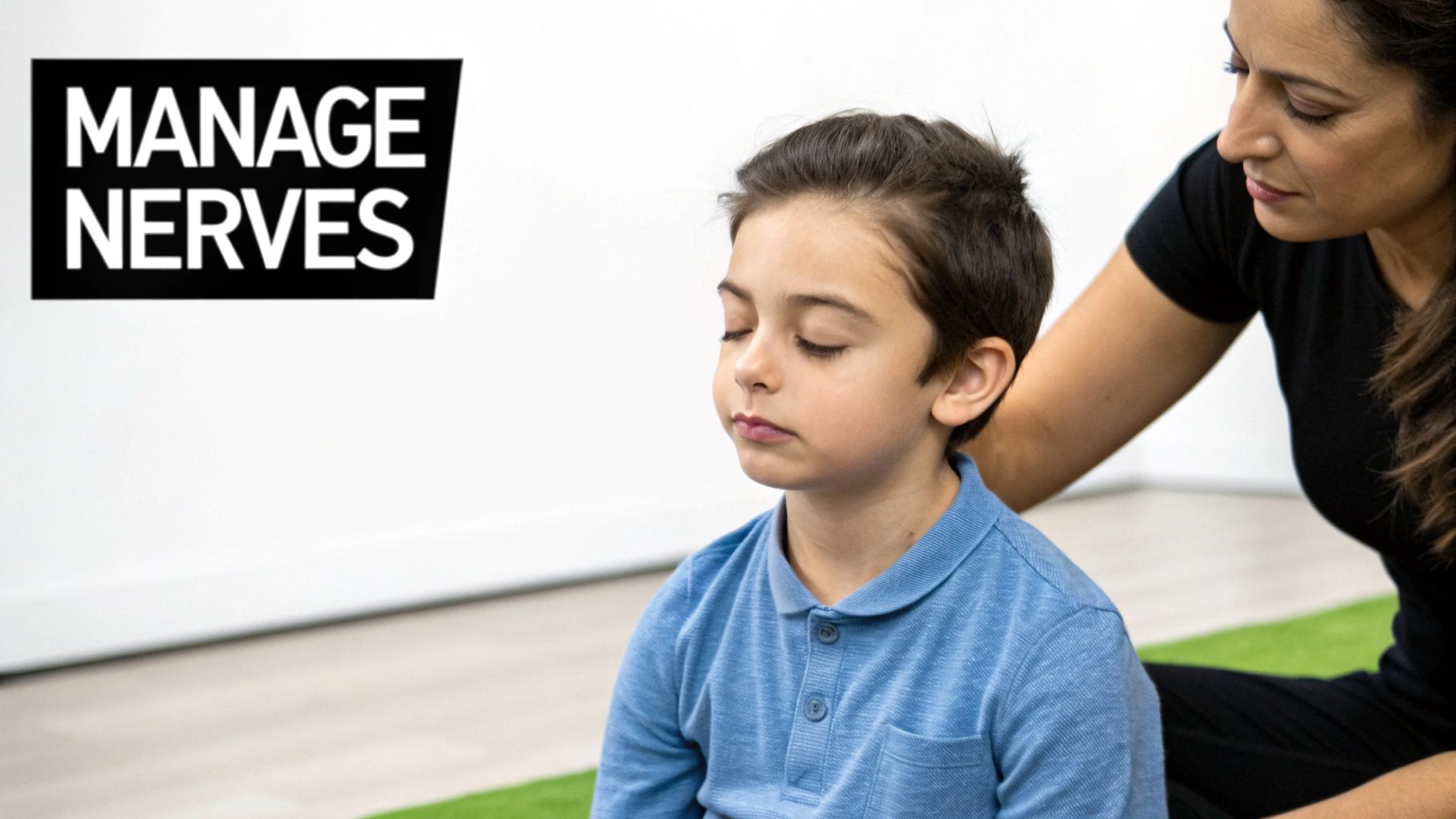
It’s completely normal for a child to feel a flutter of nerves before speaking in front of a group. Honestly, those butterflies are a good sign—it means they care about what they're about to say. Our job isn't to get rid of that feeling, but to help them understand it and channel it.
The physical signs we all know—a racing heart, sweaty palms, a shaky voice—are just the body’s way of gearing up for something important. You can help your child reframe this nervous energy as "excitement" or "performance energy." That simple shift in perspective can turn a source of fear into a source of power. It's a game-changer.
Practical Tools for Staying Calm
When the jitters really kick in, simple, physical actions can bring back a sense of control. One of the most powerful tools in our pocket is deep, conscious breathing. It's something you can practice anywhere, anytime, making it a reliable go-to right before a presentation or even a class discussion.
Here's an easy breathing exercise to try together:
- Box Breathing: Have them slowly breathe in for a count of four.
- Hold It: Then, hold that breath for another count of four.
- Breathe Out: Exhale slowly for a count of four.
- Pause and Repeat: Wait for a final count of four before starting again.
This rhythmic breathing actually slows the heart rate and calms the nervous system, giving an almost immediate feeling of relief. To help kids handle the pressure of speaking, exploring effective stress management techniques for students can also make a huge difference in their focus and composure.
The Power of Positive Self-Talk
That little voice inside a child's head can either be their biggest cheerleader or their harshest critic. We can help them coach that inner voice to be more encouraging by giving them simple positive affirmations. These aren't just fluffy phrases; they are mental rehearsals for success.
Shifting the goal from a flawless performance to making a genuine connection is key. When kids focus on sharing their ideas with just one person in the audience, the pressure to be perfect fades away, and authentic confidence grows in its place.
Encourage them to repeat simple, powerful statements to themselves. Things like:
- "My ideas are worth sharing."
- "I am prepared and I can do this."
- "It's okay to be nervous; I can use this energy."
Giving Feedback That Builds Resilience
After your child speaks, the way you give feedback is absolutely crucial. The goal is to build them up and make them want to try again, not to point out every little mistake. Always start by praising their effort and bravery before offering any gentle, specific suggestions.
For instance, instead of saying, "You were fidgeting a lot," try something like, "You shared such interesting ideas! Next time, let's try keeping our hands calmly at our sides so everyone can focus on your amazing words." This approach nurtures a growth mindset, teaching them that public speaking for kids is a skill that gets better with practice, not a scary, one-time performance.
You're building resilience, one conversation at a time.
Fun Exercises to Build Powerful Speaking Habits

The secret to building strong public speaking skills is making practice feel like play. Forget about rigid drills and stressful rehearsals. When you turn skill-building into fun, game-like activities, you help your child develop powerful habits without them even realizing they're "practicing."
These exercises are designed to be short, engaging, and super easy to adapt for different ages. The focus isn't on perfection; it's on exploring their voice and building muscle memory for clear, confident communication.
Let's dive into a few activities that can easily become your child's favorite part of the day.
The Emotion Game for Vocal Variety
Is your child's delivery a bit monotone? That’s a super common hurdle for new speakers. "The Emotion Game" is a fantastic way to teach kids how to use their voice to convey feeling and keep listeners hooked. Best of all, it’s simple, fun, and usually ends with a lot of giggles.
Here’s how you play:
- Write Down Emotions: On small slips of paper, jot down different emotions like "happy," "sad," "angry," "excited," "scared," or "surprised."
- Pick a Simple Sentence: Choose a totally neutral sentence. Something like, "I have a new pair of shoes," works perfectly.
- Act It Out: Have your child pick a piece of paper and say the sentence while acting out that emotion.
This little game is a game-changer. It teaches them that how they say something is just as important as what they say. It’s a foundational lesson in the art of engaging an audience.
Mirror Me for Body Language
Body language speaks volumes, often before a single word is even spoken. The "Mirror Me" game helps children become more aware of their gestures, posture, and facial expressions in a playful, no-pressure way.
Start by standing face-to-face with your child. Explain that they need to copy your movements exactly, like they’re your reflection in a mirror. Use slow, deliberate motions at first.
- Raise one arm.
- Smile widely.
- Take a confident step forward.
- Put your hands on your hips.
After a minute, switch roles and let your child be the leader. This activity doesn't just improve their physical awareness; it also strengthens their observation skills—a key part of understanding audience feedback. For more great ideas, check out this guide on speech exercises to do at home with your child.
One-Minute Stories for Structure
One of the biggest challenges in public speaking for kids is organizing thoughts into a clear, logical sequence. "One-Minute Stories" is an excellent impromptu speaking game that sharpens this exact skill.
Give your child a simple prompt, like "a trip to the beach," "my favorite animal," or "a magical treehouse." Then, set a timer for one minute and ask them to tell a story about it.
The goal is for them to create a story with a clear beginning, a middle, and an end. It doesn't have to be a masterpiece; the real win is in the practice of structuring their thoughts on the fly.
As they get more comfortable, you can toss in more complex prompts or ask them to include specific elements in their story. This builds both creativity and the mental framework needed for crafting a well-organized speech or presentation.
Age-Appropriate Public Speaking Activities
Choosing the right activity for your child's age is key to keeping them engaged and building skills effectively. A game that's perfect for a 5-year-old might not challenge a 10-year-old enough. This table breaks down some simple-to-advanced activities tailored for different age groups to help you pick the most suitable exercises.
| Age Group | Recommended Activity | Main Skill Targeted |
|---|---|---|
| Ages 4-6 | Show and Tell | Describing objects, expressing likes/dislikes |
| Ages 7-9 | One-Minute Stories | Story structure (beginning, middle, end), impromptu thinking |
| Ages 10-12 | Book or Movie Report | Summarizing information, organizing key points, expressing opinions |
| Ages 13+ | Mini-Debates | Forming arguments, listening to opposing views, persuasive speaking |
Using this as a guide, you can ensure the activities you introduce are both fun and developmentally appropriate, setting your child up for success without overwhelming them.
Public Speaking for Bilingual Kids in the UAE
Growing up in a wonderfully multilingual place like the UAE gives children a unique edge, but it can also present some interesting challenges for public speaking. If you're raising a bilingual child, you know the goal is to help them feel confident speaking both English and Arabic. It’s all about embracing the beauty of both languages within their specific cultural world.
A common scenario we see is children fluidly switching between their colloquial Arabic dialect at home and the more formal Modern Standard Arabic (MSA) they need for school. This isn't a weakness—far from it. It’s actually a sign of a highly capable brain juggling multiple linguistic codes. Our job as parents and mentors is to build a solid bridge between these worlds, so they feel just as comfortable giving a classroom presentation as they do chatting at a family gathering.
Embracing Both Languages Fully
To build real, lasting confidence, we need to show our kids that both their languages are equally valuable tools. Try to avoid framing one language as more "important" or "academic." When a child feels validated as a bilingual communicator, it does wonders for their identity and self-esteem.
You can create this supportive environment in a few simple ways:
- Encourage storytelling in both languages. Ask them to share about their day in English, then maybe retell their favorite part in Arabic.
- Lean into bilingual media. Watching cartoons or reading books that flip between English and Arabic helps normalize what they're already doing naturally, a practice known as code-switching.
- Celebrate their linguistic wins. Make a point to praise them when they nail a new Arabic word or explain a complex idea clearly in English.
This approach reinforces that being bilingual is a superpower, not a hurdle. It helps them grow into articulate, adaptable communicators. If you notice they're facing specific hurdles, exploring resources on effective bilingual speech therapy in Dubai for multicultural needs can offer more specialized support.
Bridging the Dialect and Formal Arabic Gap
The UAE’s educational landscape is rich, with many school curricula blending English and Arabic to foster true fluency. This mirrors a broader trend across the Middle East, where strong oral communication skills in MSA are essential for success.
It’s important to remember that this isn't always a seamless process for every child. In fact, some initiatives report that approximately 23 million children in the MENA region experience language difficulties, which underscores just how crucial early support is.
Your role isn't to be a formal language instructor, but a confidence builder. Frame the difference between home dialect and MSA as learning two different ways to talk to different people—like using a friendly voice with family and a more respectful one with teachers.
By celebrating their incredible ability to navigate between languages and dialects, you empower your child to find their own voice, no matter which language they’re speaking. This is how they become the effective, self-assured speakers who are ready to share their unique perspective with the world.
Here's the rewritten section, designed to sound like an experienced human expert:
It’s All About Building Lifelong Confidence, Not Instant Perfection
Let's be clear: this isn't about raising a world-class orator overnight. The real win is nurturing a kid who feels confident enough to share their thoughts and ideas with the world. That's a game-changer.
When we shift our focus from "perfect performance" to "brave participation," everything changes. This is how you build real, lasting self-assurance.
Every time you praise them for the small stuff—like telling a detailed story at the dinner table or mustering the courage to ask a question in class—you’re reinforcing their bravery. You're teaching them that their voice matters.
This kind of positive feedback, combined with a home where it’s safe to speak up, gives your child an incredible toolkit for life. They start to internalize the idea that what they have to say has value and deserves to be heard.
The ultimate goal is to arm your child with the self-assurance to speak their mind clearly and thoughtfully. That's a skill that will serve them far beyond any stage or classroom, shaping how they connect with others and advocate for themselves for the rest of their lives.
Got Questions? We've Got Answers
It's natural to have a lot of questions as you guide your child on their public speaking journey. Let's tackle some of the most common ones that pop up for parents.
When Is the Right Age to Start?
You can start planting the seeds for confident speaking way earlier than most people think—even around age 3 or 4. At this age, it's all about fun and play, not formal lessons.
Think of it as building comfort, not a skill. Reading stories with big, expressive voices, having little family "show and tell" moments with a favorite toy, or just asking them to tell you all about their day are perfect starting points. The goal is simply to make expressing themselves feel safe and normal. Once they hit 7 or 8, their thinking and language skills are ready for more structured practice, like putting together a very short talk on a topic they love.
How Can I Encourage My Shy Child?
When you have a shy or hesitant child, the approach needs to be gentle, patient, and completely free of pressure. The secret is to start small and make it feel like a game. Never force it.
- Start without words. Fun, non-verbal games like charades or acting out animal sounds can build expressive confidence before they even have to say a word.
- Ease into one-on-one "interviews." You can be the reporter and ask them all about their favorite stuffed animal or a new LEGO creation. It’s just a conversation between the two of you.
- Praise the effort, not just the result. Every time they try, no matter how small the step, celebrate their bravery. A simple "I loved how you told me that story!" can be incredibly powerful.
The whole idea is to build up their confidence layer by layer in a completely safe space. You’re creating a foundation of trust at home long before they ever think about speaking in front of a bigger audience. This gradual, patient approach is everything.
Are There Any Good Resources or Tools You'd Recommend?
Absolutely! There are some great tools out there that can make practice feel less like practice. An app like Flip is a fantastic example. It lets kids record short, simple videos about different topics, which is a great way to practice speaking without the immediate pressure of a live audience.
Storytelling apps are also a goldmine. Any app where a child can build a simple story and then narrate it helps them learn to organize their thoughts into a beginning, middle, and end. For older kids who are ready for the next step, look into a local Toastmasters Gavel Club. These clubs provide a wonderfully supportive and structured environment for them to practice with other kids their age.

